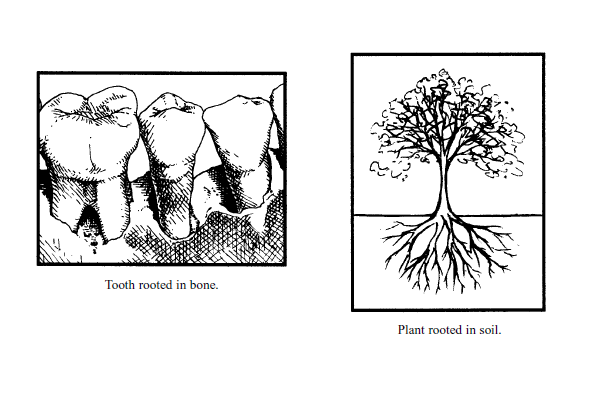Understanding Gum Disease
With increased awareness of periodontal disease and a greater selection of dental hygiene products available, why is gum disease the most commonly diagnosed health problem among today’s American adult population, affecting approximately 40 million people? Since this disease of the mouth has a destructive nature, it is important that you follow the guidelines described in this book to help begin the healing process. People have been losing their teeth as part of the aging process; however, with routine cleanings and good home care, we can all keep our natural teeth. If you exercise preventive care, it is not unreasonable to expect your teeth and gums to last a lifetime.
Gum Disease the First Steps Toward Healing
To understand gum disease in simple terms, think of your teeth rooted in bone the way a plant is rooted in soil. If the soil supporting the plant begins to erode, the plant will loosen and bend. The same thing can happen with your teeth. If the bone that supports the teeth in their sockets begins to erode, the teeth will loosen and fall out.
The first stage of periodontal disease is called gingivitis: gingiv (gum tissue) and itis (inflammation). This initial stage is characterized by loose, swollen, tender, and/or bleeding gums. The loose, flabby gum tissue allows pockets to form between the teeth and the gum tissue—pockets in which food debris can collect and harmful bacteria can multiply. The bacteria may then attack the neighboring jawbone, causing it to erode. When bone loss has occurred, the disease has progressed to the second stage. This is known as periodontitis, and is classified as early, moderate, or advanced, depending on the degree of bone destruction.
Gum Disease the First Steps Toward Healing
What causes gingivitis? Gingivitis is a bacterial infection of the gum tissue. Bacteria live in plaque, a sticky film that accumulates on your teeth every day. Plaque needs to be removed by proper oral home care. If it is not removed properly, the toxins in the plaque will cause the gums to get irritated and infected. Plaque left on the teeth and not disrupted by brushing and flossing will calcify and turn into calculus (commonly called “tartar”). Brushing and flossing cannot remove calculus; it must be removed by a professional. Calculus found caked on the roots of diseased teeth, in addition to containing bacterial toxins, is a mechanical irritant to the soft tissue.

